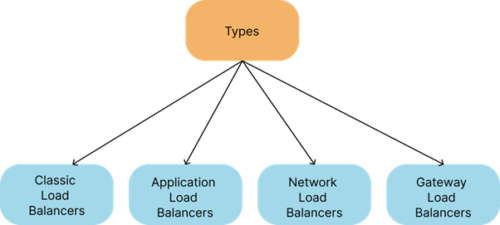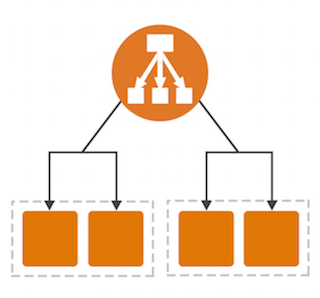We’ll discuss AWS Elastic Load Balancing (ELB) in this blog.
One of the most critical duties in just about any firm is Distributing Workloads among various Computing Resources. The service Amazon AWS Elastic Load Balancer was explicitly created for dispersing workloads. This blog’s AWS load balancer lesson will delve deep into AWS ELB.
The following topics will be covered in this AWS ELB blog:
- What is Elastic Load Balancer (ELB) by Amazon AWS?
- How Do AWS ELBs Operate?
- Elastic load balancers in AWS: Types and Benefits
What is Elastic Load Balancer (ELB) by Amazon AWS?
A service called a load balancer Evenly Distributes Network Traffic and workloads among several servers or a cluster of servers. All clients communicate with AWS Elastic Load Balancer, which can route them to the geographically closest instance or the instance with the lowest latency. AWS’s load balancer improves an application’s availability and fault tolerance.
Your Workloads will be Split among various computing resources, such as a Virtual Machine or Virtual Server, thanks to the AWS Load Balancer. This will result in less application availability and failover. You can also delegate the encryption and decryption tasks to your load balancer, freeing up your computing services to focus on their core tasks.

Image courtesy of Amazon AWS.
How Do AWS ELBs Operate?
The Elastic Load Balancer’s primary operation is to take Incoming Traffic from its customers and then Direct Requests to the Targets that the clients desire. The load balancer will Stop Rerouting its users to an Unhealthy target and will move with the other healthy targets until that target is deemed healthy.
You must configure an AWS ELB by specifying one or more listeners to have it accept incoming traffic. A process that listens for connection requests is called a Listener.
Enabling Availability Zones
Your Amazon load balancer can have availability zones enabled, in which case a load balancer node will be built. Multiple Availability Zones should be Enabled and have at least one registered target. The load balancer can direct traffic there if at least one target has been registered. The Benefit of having numerous AZs and targets is that when a Few Targets Fail, AWS load balancing may direct traffic to other targets.
Elastic Load Balancers in AWS: Types and Benefits

- Classic Load Balancer
A classic load balancer is a load balancer that Distributes traffic among numerous instances in various Availability Zones.
Routing traffic to healthy Instances increases the availability of your application and supports both EC2 Classic and EC2-VPC.
Supports persistent sessions with cookie-generated by the application, HTTP, HTTPS, TCP, and SSL listeners.
To Make Sure that the instances you have registered can handle the demand, Keep roughly the same number of cases registered with the load balancer in each AZ.

Image courtesy of Amazon AWS.
- Network Load balancer
To prevent any latency, the Network Load Balancer Handles Erratic and Irregular Traffic across the EC2 Instances.
TCP protocol Support and connection baseload Balancing are also provided.
The capacity to scale to millions of requests per second and manage unstable workloads.
Support for the load balancer’s use of static IP addresses or allocate one Elastic IP address per load balancer-enabled subnet.
Cross-zone load balancing is, by default, turned off.
The Source IP Addresses of the clients are maintained and made available to your apps when you designate targets using an instance ID. The source IP addresses are the private IP addresses of the load balancer nodes if targets are specified by IP address.

Image courtesy of Amazon AWS.
- Application Load balancer
Application Load Balancer is the name of the load balancer that distributes traffic to the right target audiences Based on Content.
Layer 7 load balancing platform with new features.
Enables Tight Interaction with the EC2 container service and supports web sockets, HTTP, HTTPS, microservices, and container-based applications.
Assistance with Host-Based and Path-Based routing. On a single EC2 instance, send routing requests to various applications.
In addition to being able to specify which Lambda functions are intended to handle HTTP(S) requests, cross-Zone load balancing is always enabled.
Only supports sticky sessions using cookies generated by the load balancer.

Image courtesy of Amazon AWS.
- Gateway Load Balancer
Your third-party virtual appliances are Simple to Deploy, Scale, and Manage thanks to it.
Give you a single gateway to distribute traffic among various virtual appliances while allowing you to scale them up or down in response to demand.
It Improves availability and removes potential points of failure from your network.
In the AWS Marketplace, users can browse, test, and purchase virtual appliances from independent sellers.
The deployment process is streamlined by this integrated experience, allowing consumers to benefit from virtual appliances more rapidly, whether they wish to continue using the same suppliers they have been using up to this point or try something new.

Image courtesy of Amazon AWS.
Benefits of AWS ELB
- Highly Accessible
ELB equally distributes traffic among all the targets, such as numerous EC2 instances. The SLA for ELB is 99.99 percent.
- Flexible
It is possible to launch numerous applications in a single instance thanks to Flexible ELB’s ability to redirect traffic using the IP address of the application.
- Extremely Secure
Utilizing Amazon VPC and Amazon ELB, you may install strong security measures.
- Scalable
Millions of requests per second can be handled by elastically scalable ELB, which can manage traffic surges that come on suddenly. To ensure that website users have flawless performance, the AWS auto-scaling capability will be triggered if there is an increase in traffic.
- Combinational Load Balancing
The same Amazon load balancer can be used to balance apps on both your on-premises infrastructure and your AWS infrastructure. Moving your application from on-premises to AWS cloud will now be quite straightforward.
- Dependable Auditing and Monitoring
Applications may be maintained, and their performance can be tracked. Analyzing our applications’ data, traffic, and operation is also possible using CloudWatch metrics and logs.

Conclusion: A tested method for dispersing application and web traffic requests among various targets or instances is elastic load balancing. You may Automatically Scale your various workloads using AWS Elastic Load Balancer. The different types of load balancers employed in ELB and their salient characteristics have also been covered.

Happy Coding!


Nice post Sanket.. Keep it up..
Very informative & great Blog!!